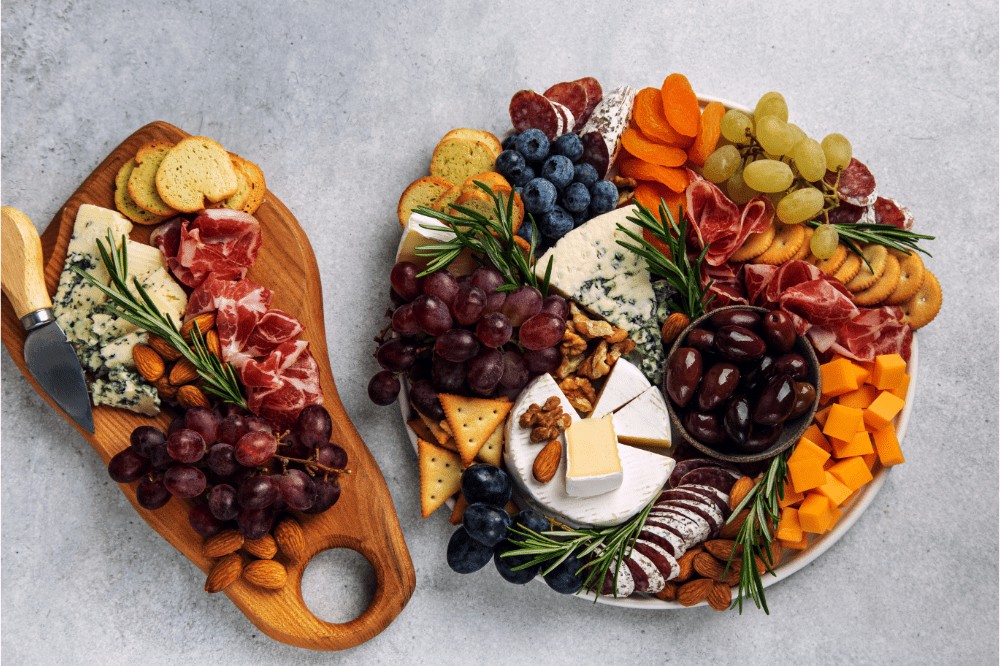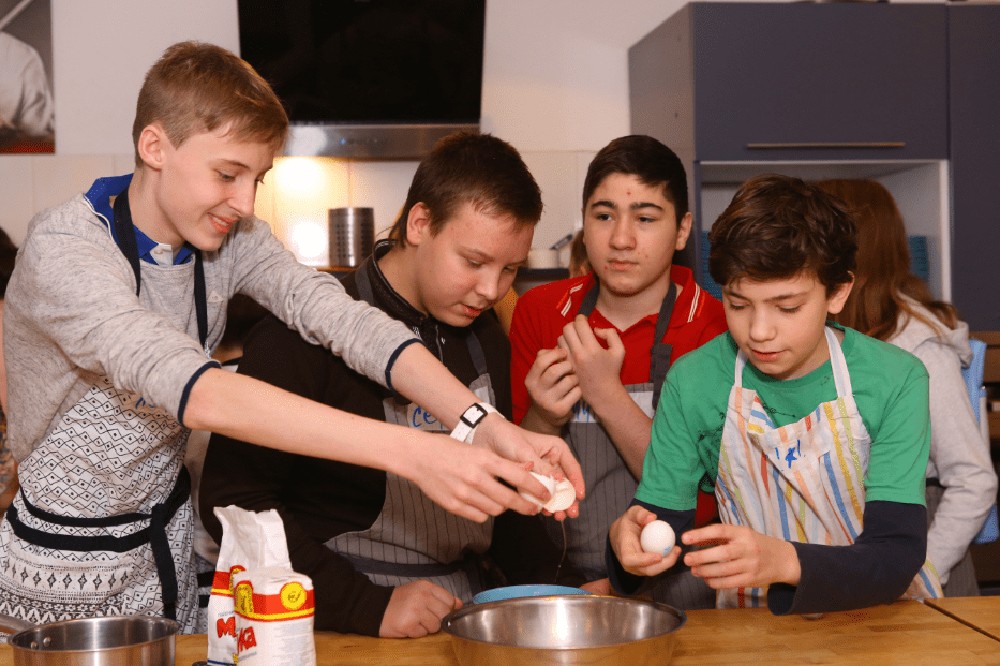Healthy Eating Tips for Teens and Adults with Autism

All contents of this resource were created for informational purposes only and are not intended to be a substitute for professional advice, diagnosis, or treatment. Always seek the advice of your physician, therapist, or other qualified health providers with any questions or concerns you may have.
Everyone knows that a nutritious diet is key to being healthy. But how do we get our teens and adults with autism to make healthy eating choices? In this article, we will discuss:
- Starting the GFCF diet with your teen or adult
- Trying new foods
- IEPs, transition plans, and food allergies
- Life skills and meals
- Food budgeting and SNAP benefits
- Self-advocacy and self-determination

Starting the Gluten-Free, Casein-Free Diet with Your Teen or Adult
Change can be hard, but that does not mean it is impossible! The first step to making dietary changes begins with education. Presume competence in your teen or adult and include them in the education process regarding healthy eating. Empowerment can lead to a willingness to try something new!
- Research and learn about the Gluten-Free, Casein-Free Diet for Autism.
- Make dietary changes as a whole family.
- Read and learn from TACA’s article on Top Reasons to Implement a Gluten-Free, Casein-Free Diet.
- Make a plan! The path to healthier eating takes time.
- First, create a food journal of what foods your family already eats.
- Next, label the foods that are already GFCF.
- Then, choose a few foods that could easily be modified to be GFCF.
- Don’t forget to pick a new food or recipe for your family to try for the week!
- Remember, just because a food is GFCF doesn’t mean it is automatically healthy! Non-processed, whole foods are the best choice.
- There will be trial and error. Change is less intimidating if you can break it down into smaller steps.
- Over time, you will have more favorite foods!
Trying new Foods

Make meals fun and interesting in a no-pressure way that encourages your child to try new foods. Here are a few ideas to make new foods fun!
- Movie night with themed foods
- Party with family or friends where everyone takes part in cooking
- Host a food tasting party
- Make a themed buffet-style bar
- Build a protein bowl
- Create your own pizza
- Popcorn bar with different flavored seasonings
- Salad bar
- Taco bar
- Baked potato bar
- Breakfast foods bar
- Creatively present the food.
- Charcuterie board
- Muffin tins
- Snacklebox
- Fruit or veggie platter
- Make meal into a kebab.
- Offer a “taste plate” which only has 1-2 bites of food.
- Pair a new food with a favorite food.
- Use different food picks or appetizer serveware instead of traditional plates and silverware.
- However, if your child is a highly picky eater, you may need to investigate underlying medical issues that could be contributing.
- Read TACA’s article on Picky Eating and Autism.
IEPs, Transition Plans, and Food Allergies
Federal law requires schools to accommodate food allergies with proper documentation. In partnership with your IEP team, develop an environment that supports dietary restrictions. Read more about Tips for Including Dietary Restrictions in Your Child’s IEP.
- Communication is key!
- Most importantly, always provide medical documentation regarding food allergies and restrictions.
- Additionally, work with your child’s teacher on providing healthy alternatives.
- Finally, download this FREE tip sheet for teachers all about the GFCF diet at school.
- Develop a transition plan with cooking and meal choices as part of the curriculum.
- Goals may include:
- Cooking skills
- Kitchen safety
- Meal planning
- Grocery shopping
- Reading labels for ingredients and checking for allergens
- Calculating measurements
- Reading and following recipes
- Time management
- Communicating allergens to restaurant staff
- Recognizing signs of allergen exposure
- Self-assessment of allergen reactions
- What to do in case of an exposure
- Goals may include:
Life Skills and Meals

Life skills are essential for all teens and adults. Therefore, you want to work on these skills before your child reaches adulthood. Likewise, reinforce IEP goals by working on them at home. For instance, create your own list of skills needed for your child to prepare food for themselves as independently as possible.
- Cook together as a family
- Meanwhile, look for ways to include your teen or adult
- Use visual supports. For example:
- Step-by-step pictures
- Lists
- Video modeling
- Emerging skills may include
- Gathering ingredients
- Measuring
- Pouring
- Mixing
- Setting the timer
- Cutting soft foods with a butter knife
- Cleaning fruits and vegetables
- Using microwave
- Practicing picking things up with a pot holder
Food Budgeting and SNAP Benefits

- Creating healthy meals and staying on a budget takes planning.
- First, make your meal plan.
- Then create a grocery list and STICK TO IT!
- Not following your healthy meal plan or trying to “wing it” in the grocery store increases the chances you will exceed your budget.
- Teach your child how to compare prices.
- Explain the difference between total price and unit price.
- Supplemental Nutrition Assistance Program (SNAP) benefits
- A federal program that supplements family food budgets to help afford healthy foods.
- Individuals with disabilities may be eligible for SNAP benefits.
- Read about SNAP Special Rules for Elderly and Disability to see if your child may qualify.
- To apply for SNAP benefits, you must apply through your state.
- Additionally, SNAP provides educational materials about healthy eating.
- Lastly, you can read more about eating a GFCFSF Diet on a Budget.
Self-Advocacy and Self-Determination

Self-advocacy skills are an important part of becoming an adult. When it comes to healthy eating and food allergies for our teens and adults, they need to learn how to make those needs known.
- Above all, help the individual know their healthy food choices and understand their right to advocate for a truly person-centered plan.
- For example, at home, you can practice:
- Reading labels
- Requesting food allergen lists from restaurants
- Communicating to restaurant staff about food allergies
- Ordering your food
- Finding GFCF or allergen-free alternatives at the grocery store
- The Americans with Disabilities Act (ADA) also protects college students with food allergies.
- Learn more about food allergy management on campus from Food Allergy Research and Education’s Access Service Guidance for Students with Food-Related Disabilities.
- Similarly, if your individual is attending a job training or independent living skills program, they need to be aware of your teen or adult’s dietary needs.
- Individuals should have a say in whether they want to work in the food service industry.
- Food allergies can be accommodated in the workplace
- Ensure Independent Living Skills Programs are customized to meet the individual’s dietary needs as they teach cooking with independence.
- Consequently, work in partnership with the individual to teach a healthy living style.
- When interviewing staff and caregivers, ask if they know how to cook.
- In addition, work out a training schedule to show them shopping and recipe ideas that will meet the individual’s dietary needs.
- Augmentative and Alternative Communication (AAC) users’ communication differences should be accounted for.
- Certainly, provide the vocabulary they will need.
Conclusion
Although making healthier food choices is difficult for people, it is not impossible. Teens and Adults with autism should be included in the family’s healthy eating plan and contribute to meal preparation. While we want to encourage autonomy and self-determination, caregivers should be aware of the individual’s health plan and dietary needs to ensure they are followed.




